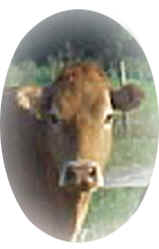IF YOU have ever longed for a meat substitute that smelt and tasted like the real thing, but did not involve killing an animal, then your order could be ready soon. Researchers believe it will soon be possible to grow cultured meat in quantities large enough to offer the meat industry an alternative source of supply. A MEATY QUESTION
Biotechnology: Meat grown in vats, rather than in the form of animals, could soon be on the menu. It might even be healthier and better for you.Growing muscle cells (the main component of meat) in a nutrient broth is easy. The difficulty is persuading those cells to form something that resembles real meat. Paul Kosnik, the head of engineering at a firm called Tissue Genesis, is hoping to do it by stretching the cells with mechanical anchors. This encourages them to form small bundles surrounded by connective tissue, an arrangement similar to real muscle.
Robert Dennis, a biomedical engineer at the University of North Carolina, believes the secret of growing healthy muscle tissue in a laboratory is to understand how it interacts with its surroundings. In nature, tissues exist as elements in a larger system and they depend on other tissues for their survival. Without appropriate stimuli from their neighbours they degenerate. Dr Dennis and his team have been working on these neighbourly interactions for the past three years and report some success in engineering two of the most important--those between muscles and tendons, and muscles and nerves.
At the Touro College School of Health Sciences in New York, Morris Benjaminson and his team are working on removing living tissue from fish, and then growing it in culture. This approach has the advantage that the tissue has a functioning system of blood vessels to deliver nutrients, so it should be possible to grow tissue cultures more than a millimetre thick--the current limit.
Henk Haagsman, a meat scientist at the University of Utrecht in the Netherlands, is trying to make minced pork from cultured stem cells with the backing of Stegeman, a sausage company. It could be used in sausages, burgers and sauces.
But why would anyone want to eat cultured meat, rather than something freshly slaughtered and just off the bone? One answer, to mix metaphors, is that it would allow vegetarians to have their meatloaf and eat it too. But the sausage-meat project suggests another reason: hygiene. As Ingrid Newkirk of PETA, an animal-rights group, puts it, "no one who considers what's in a meat hot dog could genuinely express any revulsion at eating a clean cloned meat product."
Cultured meat could be grown in sterile conditions, avoiding SALMONELLA, E. COLI, CAMPYLOBACTER and other nasties. It could also be made healthier by adjusting its composition--introducing heart-friendly omega-3 fatty acids, for example. You could even take a cell from an endangered animal and, without threatening its extinction, make meat from it. Giant-panda steak, anyone?
PETA
HerbWeb
Vatfood.com
Animal Rights FAQ
Tissue Genesis, Inc
The End of Suffering
In Vitro Cultured Meat
